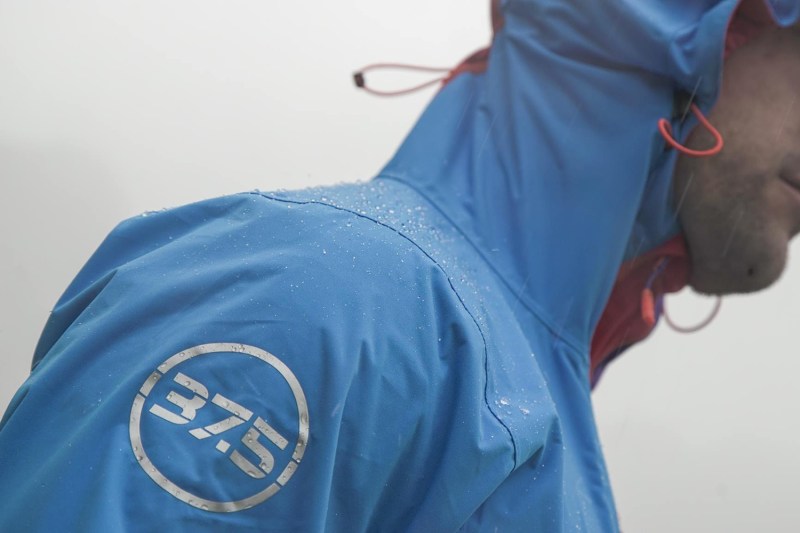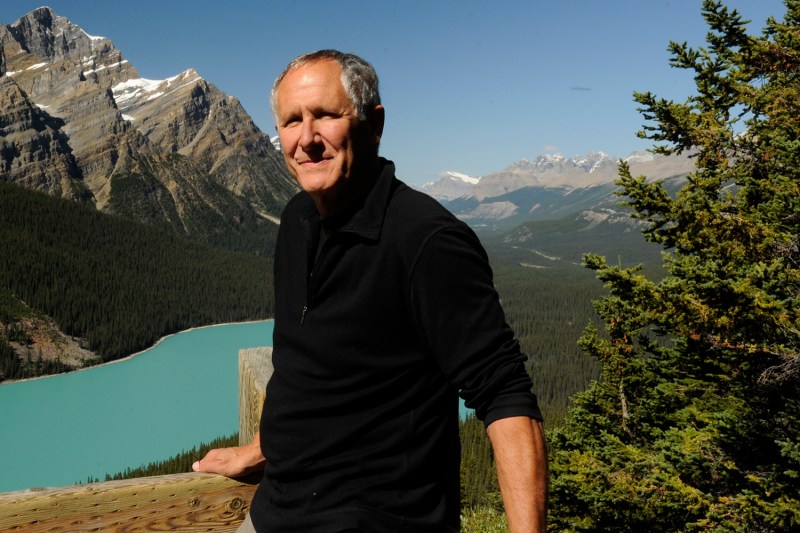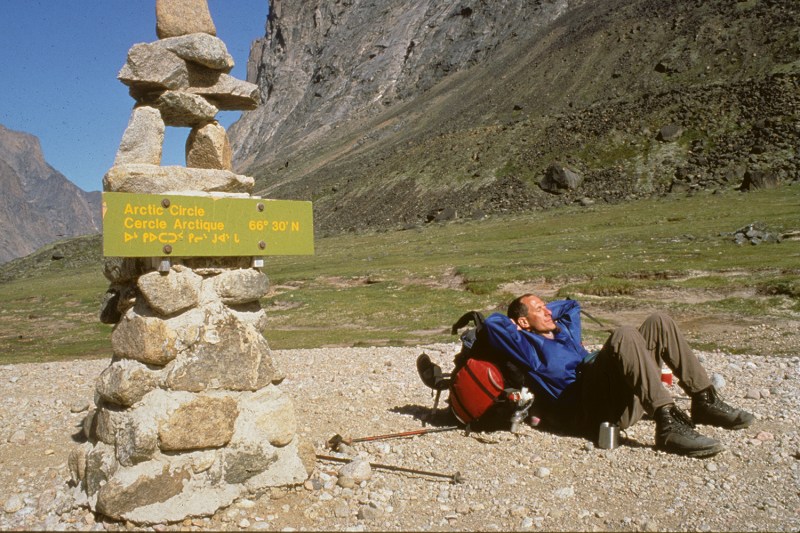Whether you’re camping, traveling, or sitting in the boardroom, the holy grail of fabrics would keep you at a comfortable temperature and never smell no matter how hard you work. While that perfect fabric doesn’t exist yet, there is something that comes close: 37.5.
What Is 37.5?
Named for the ideal body temperature — 37.5 degrees Celcius, or 99.5 degrees Fahrenheit — 37.5 tech is embedded into other fabrics like polyester or nylon and made into insulation, clothing, and bedding.

Here’s how it works: When your body heats up, the humidity increases around you. As the humidity and temperature go up, your comfort level goes down. As soon as the 37.5 particles in the fabric are above 37.5 degrees Celcius, these particles go to work transporting moisture vapor against your skin to the outside of the clothing. Removing the moisture decreases the temperature, which in turn, increases your comfort. On the flip side, when your skin temperature is lower than the outside temperature, the 3.75 particles retain your body heat, keeping you warm when it’s cold.
The space-age fabric technology isn’t just for temperature. The 37.5 particles also trap odor molecules, releasing them when washed. Polyester never smelled so good after a workout.
The uses for 3.75 are varied: Mission Workshop just launched Seamless Base Layers, ActivCor has created a bed wrapped in 37.5, and Carl Gross features it suits.
The Daredevil CEO of 37.5
Jeff Bowman is the CEO of Cocona, the company behind 37.5. We chatted with Bowman over email to see how his wild lifestyle led to overseeing such an innovative brand.
The Manual: You’re a big wall climber, trick pilot, and kayaker, among many other things. What’s the drive for you to do those risky sports?
Jeff Bowman: All of those sports are incredibly fun activities that invariably take place in some of the most beautiful spots on the Earth. In addition, most of the time you are doing them with only one other person or a very small group of friends. The camaraderie and lifelong friendships that you form with your partners is what life is all about. Like anything that forces you to focus, I never feel more relaxed than when I am climbing, paddling my whitewater kayak, or flying aerobatics in my airplane. To this day, I feel the most centered when I am in a wilderness setting.

TM: How did you become involved with 37.5?
JB: I was recruited out of retirement. At the time, I was climbing with my wife in Spain. We spent the prior 12 months climbing in the western United States and Canada, living out of a three-person tent and going from one climbing area to another every two to three weeks.
TM: You seem like someone who needs to follow your passions. How do Cocona and 37.5 line up with your personal values and goals?
JB: One advantage of being the CEO is that you can shape the company to your own values and goals, so I really have no excuse if they don’t line up exactly as I want. Early on, I learned that the most important decisions you make in business are who you hire. The team at 37.5 is incredibly talented, motivated, experienced, and fun. My job is mostly to make sure they all share the same vision, have the resources that they need, and then stay out of their way. That approach is working quite well at the moment.
TM: Does being involved in risky outdoor sports influence how you run your business? Do you think it’s an advantage?
JB: Absolutely. I have learned from having some of my closest friends die in their prime that life is incredibly short and wonderful; not a moment should be wasted. At work, it translates into a sense of urgency and a focus on getting things done. 37.5 is not bogged down by bureaucracy and we have the ability to make timely decisions.

Climbing big walls requires trust, communication, and collaboration, which are also all attributes of high-performing organizations. We have a culture where people have the ability to take risks, fail, and learn from it without getting their heads chopped off. That is important for any company that relies on innovation to compete. Risk-taking sports require you to train, plan, take responsibility for your own safety, solve problems, and stay calm when faced with calamity if you want to do them safely. All of those skill sets are important in business.
Climbing big walls requires trust, communication, and collaboration, which are also all attributes of high-performing organizations.
TM: There seems to be 37.5 in product categories from the outdoors to fashion to footwear to sleep. What’s the plan for 37.5? Will we see it in everything our skin touches?
JB: At this point, you can already find 37.5 technology in every layer of clothing and bedding from some of the most iconic brands in the apparel and bedding business. It is found in underwear, socks, shirts, jeans, pants, sweaters, suits, outerwear, accessories, and footwear. You can also find it in mattresses, mattress pads, sheets, blankets, pillows, and comforters. 37.5 technology is in knit and woven fabrics, synthetic insulation, down blends, and waterproof breathable laminates. We are not trying to do business with everyone, but rather we are focused on growing the business by aligning with brands known for innovation and quality.
TM: How did you fall in love with the outdoors? Was there a first moment that started everything?
JB: I spent the majority of my youth outside. Much of it was spent on a wheat farm in Idaho where my grandfather paid me to shoot prairie dogs with a .22 rifle starting around age six. Hunting, fishing and running around in the woods were just part of everyday life.
I started rock climbing in the early ’70s in Arizona and somehow managed to learn the necessary skills by trial and error without doing too much damage to my body. I had been climbing for less than two years before climbing El Capitan in Yosemite the first time. My partner and I were clueless regarding big wall logistics; the fact that we made it to the top was a testament to perseverance and luck.

I was forced to get a pilot’s license after losing my driver’s license for getting too many speeding tickets. It took me 35 days from start to finish to get my pilot’s license and own my first airplane. Aerobatics is a much safer and controlled activity than some of my flying shenanigans in the early ’80s like flying under bridges and landing on Mexican beaches to party. Times have changed.
TM: You fly a Marchetti SF260 plane. What’s the story behind that?
JB: I first started flying aerobatics in the mid-’90s while living in Massachusetts. At the time, I owned a Cessna 210 that I had for nearly 18 years and outfitted to cross the Atlantic. It was a great plane for climbing adventures, and I flew it from north of the Arctic Circle to climb in Baffin Island and to Guatemala to climb all over Mexico and pretty much everywhere between. That plane was a load-hauling machine that also crossed the United States with my family many times. But flying it was akin to driving a station wagon and I always lusted after the Marchetti as it had the reputation as the best-handling, most fun to fly airplane ever built. So, after my kids grew up and my now ex-wife no longer wanted to go flying, I test flew the Marchetti at Air Combat in Burbank, California. Love at first sight!
What’s the next big personal adventure for you?
JB: I am working to get in shape to go climb the Lotus Flower Tower this summer up in the Northwest Territories of Canada. It has been on my bucket list for years, and one of my long-time climbing partners, Tim O’Neill, is putting together the trip.
TM: We were introduced to you as the “Dos Equis guy in CEO form.” We have to ask: What’s your favorite drink?
JB: Crown Royal neat. My wife, who had never had a single drink of alcohol before she met me, was weaned on it during our year-long climbing trip in 2012. To this day, it is one of the very few alcohols she will drink. You can always find a bottle of it at the Bowman household, even if it takes us a while to get through.


